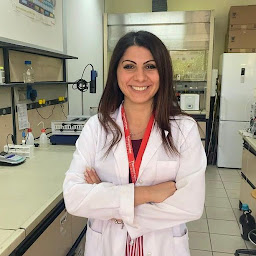Analysis of Contaminants of Toxicologic Concern in Food, Feed and Nutraceuticals – In Memory of Prof. Alberto Ritieni
A special issue of Toxins (ISSN 2072-6651). This special issue belongs to the section "Mycotoxins".
Deadline for manuscript submissions: closed (30 December 2023) | Viewed by 2524
Special Issue Editors
Interests: bioactive compounds; polyphenols; nutraceuticals; antioxidant activity; high-performance liquid chromatography; mass spectrometry; orbitrap approach
Special Issues, Collections and Topics in MDPI journals
Interests: mycotoxins; antioxidants; bioactive compounds; omics sciences; proteomics; transcriptomics; mass spectrometry; bioinformatics
Interests: thalassemia; leukemia; gene expression; transcriptional factors; mitochondria function; oxidative stress
Special Issues, Collections and Topics in MDPI journals
Special Issue Information
Dear Colleagues,
Nowadays, only a few people are aware of the exact reasons for food contamination and its effects on your health. Food contamination represents a serious concern for human and animal health, either from microbiological or chemical origins. This problematic issue can occur at different steps throughout manufacturing processes or may be already present in raw food, due to varying environmental conditions and pollution. For this reason, research is constantly focusing on the identification of possible contaminating sources and the implementation of the most suitable strategies to prevent, mitigate, or counteract them.
Worldwide research is in progress in order to develop novel extraction procedures and analytical techniques for the rapid and easy identification of mycotoxins in both food and feed supply chains. However, techniques based on high-resolution mass spectrometry (HRMS) coupled with gas chromatography or liquid chromatography appear to be the most promising approaches for successfully detecting and quantifying a broad range of different molecules.
In this Special Issue on “Analysis of Contaminants and Chemical Residues of Toxicologic Concern in Food, Feed and Nutraceuticals”, papers describing the worldwide occurrence of toxicological compounds in various commodities are welcome, as are papers on its occurrence and co-occurrence in human food, nutraceuticals, dietary supplements, and animal feed or those relating to novel methodologies for its analysis in food and feed, as well as the evaluation of reliable extraction procedures. We look forward to receiving your contributions to this Special Issue in the form of original research, case studies, or review papers, shedding light on perspectives on the occurrence and control of food contaminants in different commodities and risk assessment.
This Special Issue is dedicated to the memory of Prof. Alberto Ritieni who died unexpectedly on 13 June 2023. I would like to thank the Professor for his countless scientific contributions to the entire community and for conveying to us his extensive knowledge in the field of mycotoxins and food safety. Thank you, Professor, from all of us.
Dr. Luana Izzo
Dr. Alessandra Cimbalo
Dr. Michela Grosso
Guest Editors
Manuscript Submission Information
Manuscripts should be submitted online at www.mdpi.com by registering and logging in to this website. Once you are registered, click here to go to the submission form. Manuscripts can be submitted until the deadline. All submissions that pass pre-check are peer-reviewed. Accepted papers will be published continuously in the journal (as soon as accepted) and will be listed together on the special issue website. Research articles, review articles as well as short communications are invited. For planned papers, a title and short abstract (about 100 words) can be sent to the Editorial Office for announcement on this website.
Submitted manuscripts should not have been published previously, nor be under consideration for publication elsewhere (except conference proceedings papers). All manuscripts are thoroughly refereed through a double-blind peer-review process. A guide for authors and other relevant information for submission of manuscripts is available on the Instructions for Authors page. Toxins is an international peer-reviewed open access monthly journal published by MDPI.
Please visit the Instructions for Authors page before submitting a manuscript. The Article Processing Charge (APC) for publication in this open access journal is 2700 CHF (Swiss Francs). Submitted papers should be well formatted and use good English. Authors may use MDPI's English editing service prior to publication or during author revisions.
Keywords
- mycotoxins
- food contaminants
- method development
- mass spectrometry
- diet supplements
- occurrence
- retrospective analysis







